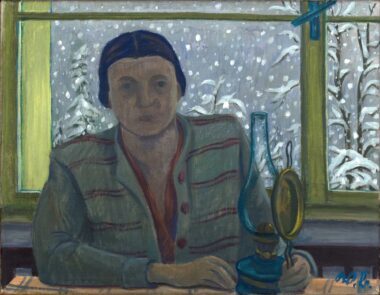Werner BERG was born on April 11, 1904 in Elberfeld in Wuppertal. After completing a commercial apprenticeship in an industrial company, he studied political science in Vienna, where he received his doctorate in 1927. Immediately afterwards he began to study painting at the Academy of Fine Arts in Vienna with Karl Sterrer and was from 1928 to 1931 master class with Karl Caspar at the Munich Academy. In 1947 he became a member of the Art Club in Vienna. In 1930 Werner Berg acquired the Rutarhof in Carinthia. In his adopted home he worked as a farmer and painter. For him, art and life formed an inseparable unit. His motifs are largely shaped by everyday rural life. In his woodcuts he brought the principle of two-dimensional representation to a climax. Werner Berg died on September 7, 1981 in his studio at Rutarhof. 1944 — first exhibition at the Welz Gallery.
Werner BERG was born on April 11, 1904 in Elberfeld in Wuppertal. After completing a commercial apprenticeship in an industrial company, he studied political science in Vienna, where he received his doctorate in 1927. Immediately afterwards he began to study painting at the Academy of Fine Arts in Vienna with Karl Sterrer and was from 1928 to 1931 master class with Karl Caspar at the Munich Academy. In 1947 he became a member of the Art Club in Vienna. In 1930 Werner Berg acquired the Rutarhof in Carinthia. In his adopted home he worked as a farmer and painter. For him, art and life formed an inseparable unit. His motifs are largely shaped by everyday rural life. In his woodcuts he brought the principle of two-dimensional representation to a climax. Werner Berg died on September 7, 1981 in his studio at Rutarhof. 1944 — first exhibition at the Welz Gallery.




Recent Comments